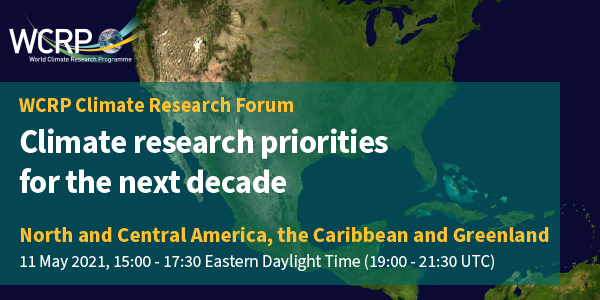Researchers from the Centre for Hydrology will be presenting at the European Geophysical Union Annual Assembly, EGU 21, this week.
Quantifying streamflow predictability across North America on sub-seasonal to seasonal timescales
Louise Arnal, Martyn Clark, Vincent Vionnet, Vincent Fortin, Alain Pietroniro, and Andy Wood
Mon, 26 Apr, 15:45–15:47
Facilitating reproducible science: a workflow for setting up SUMMA simulations anywhere on the globe
Wouter Knoben, Shervan Gharari, and Martyn Clark
Tue, 27 Apr, 15:55–15:57
Exploring the Art-Science Interface
Convener: Kelly Stanford | Co-conveners: Daniel Parsons, Konstantin Novoselov, Louise Arnal
Wed, 28 Apr, 09:00–12:30 (CEST)
Large-sample hydrology: characterizing and understanding hydrologic diversity and catchment organization
Convener: Wouter Knoben | Co-conveners: Daniele Ganora, Nans Addor, Stacey Archfield, Sara Lindersson, Sandra Pool, Nicolas Vasquez
Wed, 28 Apr, 09:00–10:30 (CEST)
The Virtual Water Gallery: a collaborative science and art project
Louise Arnal, Martyn Clark, Stacey Dumanski, and John Pomeroy
Wed, 28 Apr, 11:04–11:06
Climate change impact on the hydrological functioning of the mountain lakes: a conceptual framework
Daniel Amaro Medina and Cherie Westbrook
Wed, 28 Apr, 15:39–15:41
Progress on a comprehensive earth system model evaluation framework
Wouter Knoben, Vincent Vionnet, and Martyn Clark
Thu, 29 Apr, 09:35–09:37
Comparing impact of ERA5 vs ERAInterim on hydrology using the eWaterCycle Open Hydrological Platform
Rolf Hut, Niels Drost, Jerom Aerts, Laurene Bouaziz, Willem van Verseveld, Bert Jagers, Fedor Baart, Jannis Hoch, Lieke Melsen, Andrew Bennett, Lousie Arnal, Fabrizio Fenicia, Leonard Santos, Emiliano Gelati, Marco dal Molin, Wouter Knoben, Shervan Gharari, Caitlyn Hall, and Eric Hutton and the the Netherlands eSciencecenter eWaterCycle team
Thu, 29 Apr, 11:06–11:08
Exploring the future hydrology of a Canadian Rockies glacierized catchment and its sensitivity to meteorological forcings
Caroline Aubry-Wake and John W. Pomeroy
Thu, 29 Apr, 11:10–11:12
Do Beaver Dam Analogues Really Mimic Beaver Dams?
Cherie Westbrook and David Cooper
Thu, 29 Apr, 11:10–11:15
Improving hydroclimatic services for water sectors: from forecasts to management and policy
Convener: Matteo Giuliani | Co-conveners: Louise Arnal, Tim aus der Beek, Louise Crochemore, Stefano Galelli, Charles Rougé, Andrew Schepen, Christopher White
Thu, 29 Apr, 13:30–15:00 (CEST)
Clustering in hydrology: methods, applications and challenges
Co-organized by ESSI1/NP4
Convener: Nilay Dogulu | Co-conveners: Svenja Fischer, Wouter Knoben
Thu, 29 Apr, 13:30–14:15 (CEST)
Reliability of global gridded precipitation products in assessing extremes
Chandra Rupa Rajulapati, Simon Michael Papalexiou, Martyn P Clark, Saman Razavi, Guoqiang Tang, and John Pomeroy
Thu, 29 Apr, 14:27–14:29
Quantifying the controls of Peruvian glacier response to climate
Catriona L. Fyffe, Emily Potter, Stefan Fugger, Andrew Orr, Simone Fatichi, Katy Medina, Robert Å. Hellström, Thomas E. Shaw, Maud Bernat, Alan Llacza, Gerardo Jacome, Caroline Aubry-Wake, Wolfgang Gurgiser, L. Baker Perry, Wilson Suarez, Duncan J. Quincey, Edwin Loarte, and Francesca Pellicciotti
Fri, 30 Apr, 16:00–16:02



